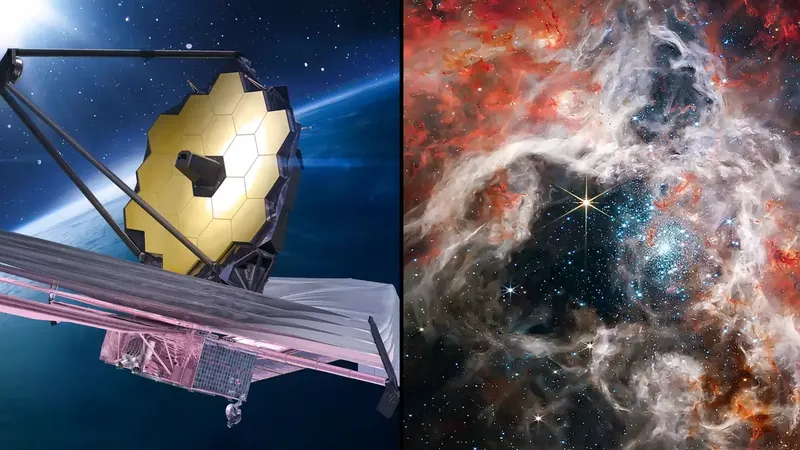
The James Webb Telescope's Shocking Revelation: Are We Misunderstanding the Universe?
2024-09-28
In an astonishing turn of events, the James Webb Space Telescope (JWST) has unveiled discoveries that could fundamentally alter our understanding of the universe. Launched in December 2021, the JWST is a remarkable successor to the Hubble Space Telescope, equipped with advanced technology that has already produced groundbreaking observations and data.
The JWST has captured breathtaking images of galaxy formations, newly birthed stars, and even the enigmatic early stages of black holes. However, its most alarming revelation may be the hint that humanity has seriously miscalculated some cosmic truths.
A critical issue known as the "Hubble Tension" has emerged, highlighting a discrepancy in the rate of the universe's expansion as determined by different methods. This tension has scientists scratching their heads, as astronomers must reconcile two conflicting measurements of the Hubble constant, which describes how fast the universe is growing.
The first method involves analyzing the remnants of the Big Bang, detected as tiny fluctuations in the cosmic microwave background radiation. Past studies between 2009 and 2013 estimated the universe's expansion rate at approximately 67 kilometers per second per megaparsec.
The second method relies on the observation of Cepheid variable stars, whose brightness flickers in a predictable pattern, allowing astronomers to create a "cosmic distance ladder." By utilizing this technique, astronomer Adam Riess and his team have determined that the universe is actually expanding at about 74 kilometers per second per megaparsec—significantly higher than previously thought. This discrepancy raises the possibility that the universe may be around 10% younger than our current estimates suggest.
The implications of this finding have sent shockwaves through the field of cosmology. Renowned physicist David Gross labeled the situation a "crisis" during a conference in 2019, emphasizing the uncertainty it has injected into our cosmological models.
While some skeptics attributed these mixed results to potential measurement errors, the JWST has provided more precise data that supports Riess's conclusions. A recent study published in the *Astrophysical Journal Letters* on February 6 has solidified the claim that our grasp of the universe may be flawed. Riess explained, “With measurement errors negated, what remains is the real and exciting possibility we have misunderstood the universe.”
By surveying over 1,000 Cepheid stars across five galaxies—some as distant as 130 million light-years from Earth—the team has confirmed the validity of their findings regarding the Hubble constant. Riess noted, “We've now spanned the whole range of what Hubble observed, and we can rule out a measurement error with very high confidence.”
The merging of data from the JWST and Hubble provides astronomers with a more reliable foundation to understand cosmic expansion. As we continue to explore the vast universe, this new evidence raises critical questions about the fundamental laws of physics and the nature of reality itself—reminding us just how little we may truly know.
Stay tuned for the latest updates on this fascinating scientific journey, where each revelation could be more groundbreaking than the last! Could we be on the brink of an astronomical revolution? Don't miss what might come next!









 Brasil (PT)
Brasil (PT)
 Canada (EN)
Canada (EN)
 Chile (ES)
Chile (ES)
 España (ES)
España (ES)
 France (FR)
France (FR)
 Hong Kong (EN)
Hong Kong (EN)
 Italia (IT)
Italia (IT)
 日本 (JA)
日本 (JA)
 Magyarország (HU)
Magyarország (HU)
 Norge (NO)
Norge (NO)
 Polska (PL)
Polska (PL)
 Schweiz (DE)
Schweiz (DE)
 Singapore (EN)
Singapore (EN)
 Sverige (SV)
Sverige (SV)
 Suomi (FI)
Suomi (FI)
 Türkiye (TR)
Türkiye (TR)